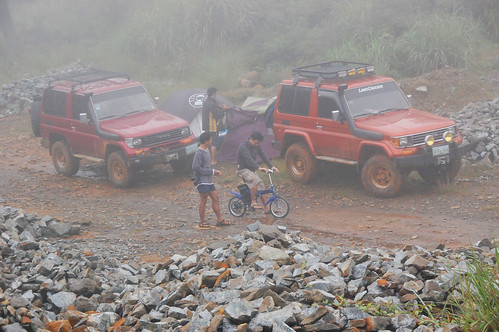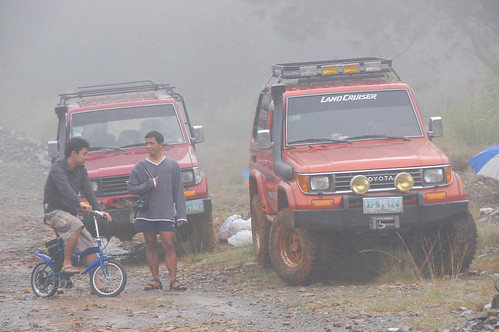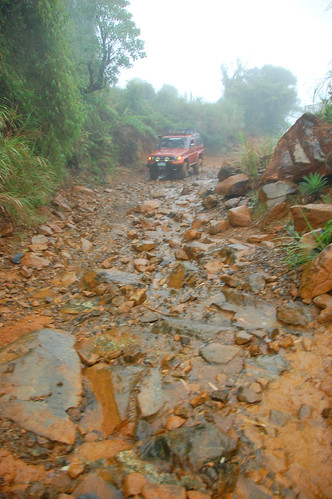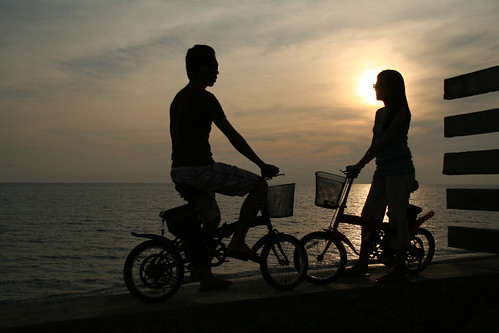Our three-day vacation in Vigan with my officemates was one of the best escapes from the bustling metropolis. And I must admit the longest road trip I ever had. I was with four other people just who traversed the straight 10-hour trip stretching over 408 kilometers. ( We left at 6 in the morning and arrived at the historic city at 4 in the afternoon.) While our Toyota Vios is a bit cramped, but comfortable nonetheless. From Manila to Bulacan to Pampanga to Tarlac to Pangasinan then La Union and Vigan, Ilocos Sur, it is like counting how many towns left as we head on to our destination - Vigan City.
Crisologo StreetAfter settling down at our hotel - the El Juliana Hotel, we decided to take stroll at the Heritage Strip. However, we can’t bring the car along the cobblestones streets so we brought our E-bike Exceed. Cars are prohibited passing through on the cobblestones streets of Vigan.

There are lots of interesting architectural designs (Spanish colonial influence) along the famed Crisologo Street. The brick roads, ancestral houses and interesting shapes of the place are just too awesome to see. Strolling along Crisologo Street is like walking through a door that leads you to the past.
Vigan BeachWe also got a chance to marvel the golden sunset being swallowed by the sea at Mindoro beach – the closest and nicest beach you can find in Vigan.
 Ilocos Cuisine and Nightlife
Ilocos Cuisine and NightlifeAfter that seaside scenery, we were so excited to come back to the plaza to have our first dinner in town. We ordered sinanglao and empanadang vigan - some of the famous delicacies in town. And of course we end up our first day, trying out the nightlife at Vigan’s premiere bar, Sitio Bar, near at the heart of the town. It was around 11 in the evening when we returned at El Juliana Hotel. At last, a good night sleep after the grueling hours of traveling across five provinces.
Bantay, Ilocos Sur: Side Tracking
On our second day, we woke up early trying to catch the sunrise at Bantay church belfry just outside of Vigan. Together with our E-bike Exceed we traversed the road going to the church, we passed by the statue of Florentina Leona, Plaza Burgos, and Plaza Salcedo. We were amazed when we reached the Bantay church it was another imposing Structure but we were not able to get close to the belfry as the gates were still locked so we just managed to steal some snapshots.
Baluarte, ViganAfter Bantay, we decided to visit the home of Vigan’s biggest cats, the Baluarte. The sun was at its hottest since we arrived, but that didn’t prevent us from taking a stroll. Baluarte is a free roaming zoo established by Gov. Chavit Singson. Here you will find different kinds of animals like camels, deer, ostriches, orangutans and the famous Siberian Bengal tigers. Another attraction in the zoo is the live animal encounter show – held 4 times a day, 7 days a week, wherein visitors are allowed to come up close to touch the animals and pose for pictures. And like all other facilities of Baluarte, the animal encounter show is free. There were still other attraction in the zoo but it was almost 12 noon so we headed back to the plaza and walked towards the fast food for lunch.
Other Places of Interest
After lunch we hurried to visit some of the notable spots around town – Plaza Maestro, Plaza Burgos, St. Paul Cathedral, Crisologo Museum, and up to the Burnayan where the famous Vigan jars are made. When you enter the compound you will be surprised by the number of jars they have.
Going back to Crisologo Street
Before the day was over, we returned at the Crisologo Street for our last night out. We took another stroll and we shopped around store by store for t-shirts, souvenirs, chichacorn, and their famous wine – Basi. After several more shots and three bags of take home stuff, we decided to returned to our hotel for our dinner and this time we didn’t miss the chance to taste their famous bagnet.
The three days seemed to pass by so fast. We left Vigan City 10 in the morning and arrived back to manila 8 in the evening.
Written by: Ryan Untalan
=====================
Some Notes:
El Juliana Hotel is located in # 5 Liberation Boulevard Corner Quirino Boulevard, Vigan City, Ilocos Sur, Philippines. El Juliana is a spacious old building, with flagged stones on the ground floor, wide imposing staircase, and huge polished hardwood floorboards over a foot wide in the bedrooms, which would be worth a fortune anywhere outside the Philippines.
Facilities: Airconditioned Rooms, CATV, Parking space, Private toilet and bath, Receiving area, Swimming Pool, Mini-conference room, Terrace (smoking area), High pressure water











































